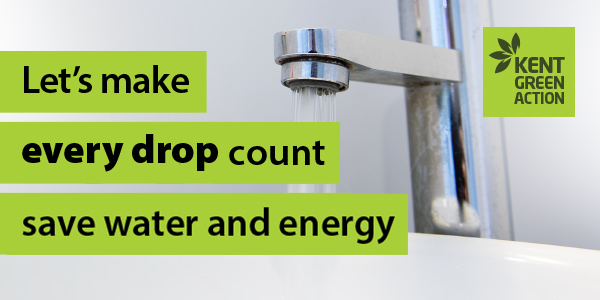Save money by saving water

If you don't already have one, ask your supplier about switching to a free water meter.
With a water meter you will only ever pay for what you use. You can also see when and where you use most water in your home.
Small changes like turning off the tap while you brush your teeth, or setting a 4 minute shower timer, can save 8,000 litres of water a year.
Download our how to save water poster (PDF, 201.2 KB) for your home or office, and help yourself to more free green action posters.
More tips to save water and save money
If you regularly water your garden, consider installing a water butt. Water butts capture rainwater that you can then use in your watering can. An added bonus is that plants prefer rainwater.
Installing an aerator can make your tap’s water usage more efficient.Aerators can be easily attached to your existing tap.
If your water bill is higher than normal, it may indicate a leak.
Leaks can be discreet, and you may not always notice they are there. Wet patches or brown water marks on your ceilings or walls may be a sign of a leak. Of course, a leak may also be easily spotted by seeing excess water around taps, radiators, pipes or appliances.
How to check for a water leak
- Open your meter chamber, which is normally outside your home.
Southern Water's guide to finding your water meter. - Check you're looking at the right meter by turning your external stop-tap off, then run a tap to make sure no water comes out. If water flows, you've turned off someone else's water!
- Turn your stop-tap back on at the meter and make a note, or take a photo, of the meter reading.
- Don't use any water for 30 minutes then take another reading. If the number has increased, there is a leak.
- Turn off your stop-tap again, take a note of the reading, wait an hour and see if the number has changed again. If it has, the leak may be outside your home. For example, in the pipes leading to and from it.
If you find a leak, you should arrange for repair as soon as possible.
To find a legitimate, reliable and trusted plumber in your area, use our TS Checked service.
When using the kettle to make a hot drink, only fill the kettle with the amount of water you need, rather than right to the top.
You'll save water and save energy. Also, you won't have to wait as long for your tea.
Does it take a while for your taps to run hot?
Fill up a bottle whilst you wait to water plants or cook with later.
Push-button toilets commonly have undetected leaks. A leaky toilet can waste up to 300 litres of water a day – fixing it could save you approximately £500 a year on your bills.
So it can pay to know if your toilet is leaking. A higher than expected bill is often the first sign you’re using more water than normal.
How to check if you have a leaky toilet
- flush the toilet
- wait 15 minutes
- dry the back of the bowl with toilet paper
- place a dry sheet of toilet paper on the back of the bowl
- wash your hands
- leave for 3 hours without using the toilet (if possible)
- return to check the toilet paper.
If the test toilet paper is:
- dry, then you don't have a leak.
- wet, then you have a small leak: Check it regularly to make sure it doesn't get worse.
- broken up, you have a significant leak and should arrange for a plumber.
To find a legitimate, reliable and trusted plumber in your area, use our TS Checked service.
When using your washing machine or dishwasher, increasing the size of your load and reducing the frequency of washes can go a long way to reduce your water use.
You could install a cistern displacement device.
These are bags full of crystals which inflate when wet: They take up room in your cistern so that when you flush the toilet, it needs less water to refill.
If you let the water run whilst using your sink, a universal plug will help to save water when washing up or rinsing.
Or you could just use a washing up bowl.
Most household's largest use of water comes from toilet flushing. Dual-flush toilets are reported to use 4 to 5 litres of water per flush, and an older system can use up to 13 litres per flush.
Cut down your water use massively by only flushing every other time you use the loo.
You can steam your veggies with less water, rather than boil them.
It will be healthier that way too.
Installing a water efficient, regulated shower head could instantly reduce your water use, without affecting the pressure of your shower.
Sadly, these are not suitable for electric showers.
We're not going to weigh in on which is more relaxing, but it's been proven that, on average, a shower uses less water than a bath .
Less hot water means you can save money on water and energy bills!
A hose gun will give you more control over the speed and pressure of the water your hose pipe releases.
To go the extra mile, use a watering can instead.